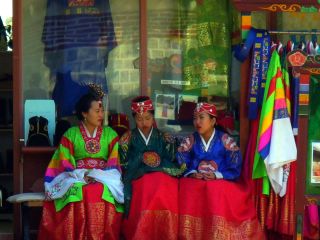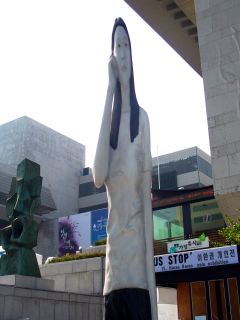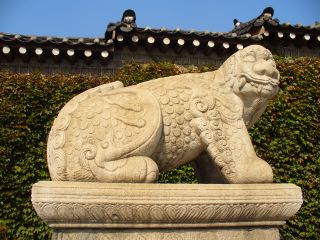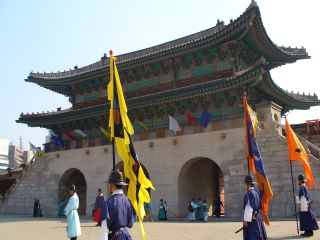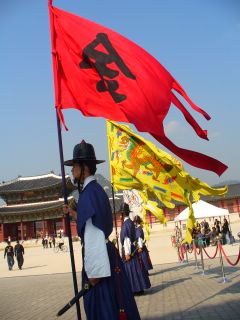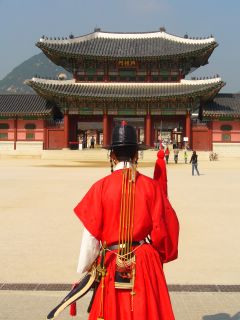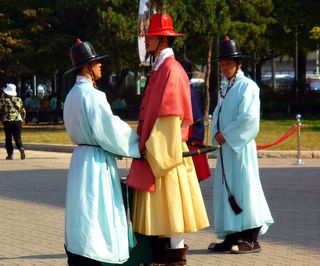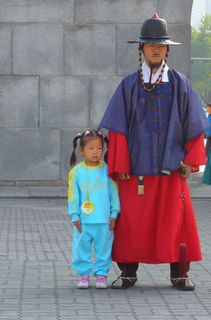A gorgeous day at Gyeongbokgung
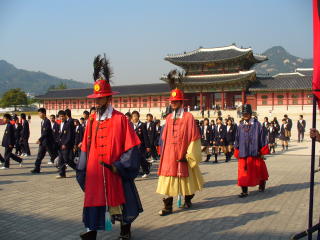
Clare wanted to visit Gyeongbokgung and photograph the lavish show the city authorities made of the guard change ceremony. This was the day after my Soyosan hike. We agreed to meet at Wood & Brick, a nice European-style restaurant close to Gwanghwamun. True to her annoying habit, Clare was late. I thought I'd enjoy a cup of coffee before her arrival and read some more from my book. What a surprise to get possibly the worst coffee I've ever gotten in Korea in such a fine and pricey establishment ( a glass of ordinary house wine sells for 9,000 won). It was see-through in its cheap glass (another surprise). They did prove to be quite a classy place by taking my complaint aganst the quality of coffee seriously and taking it off my bill. Clare and I had our usual good time together, chattering away. Her pasta was of a delicious 1 million calorie per bite sort, while my smoked salmon salad was absolutely ordinary, even boring: iceberg lettuce, bits of salmon and gallons of olive oil over it. A bit of gastronomic relief was provided by a fresh sprig of dill weed and slices of wonderful nutty cheese bread.
On our way to the palace we came across a quite bizzare open-air art exhibit entitled "The bus stop" (read more about it in the captions accompanying the picture below).
Although I've been to Gyeongbokgung before once or twice, it must have been at some inopportune time 'cause I didn't remember it as being quite so beautiful and big. This time I really appreciated all that is to be seen there.
This palace is one of the 5 major palaces in Seoul and it was built during the Choseon dynasty rule (1392-1910), in 1395 when the first king of this dynasty moved the capital from Gyeseong to Seoul. It's a big palace with extensive grounds. Two of its most attractive features are two lotus ponds. The bigger one is called Gyeonghoeru (featured on the 10,ooo won bill) and the smaller one Hwangwonjoeng. The latter is especially eye-catching as it blends beautifully with the background provided by the little mountain Amisan.
Clare and I roamed the grounds soaking up the beautiful autum afternoon sunlight, admiring the changing colour of ginko leaves, gawking at Japanese visitors, noticing this or that. It was a wonderful outing.

